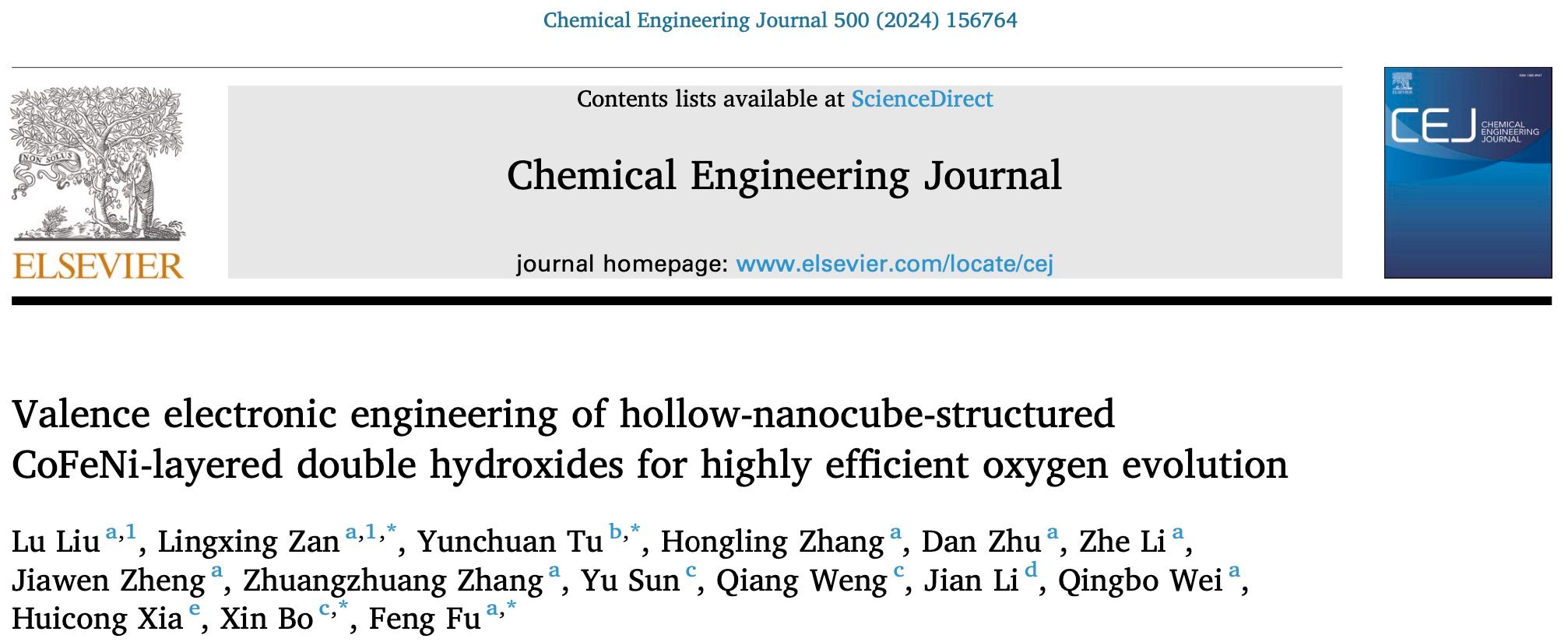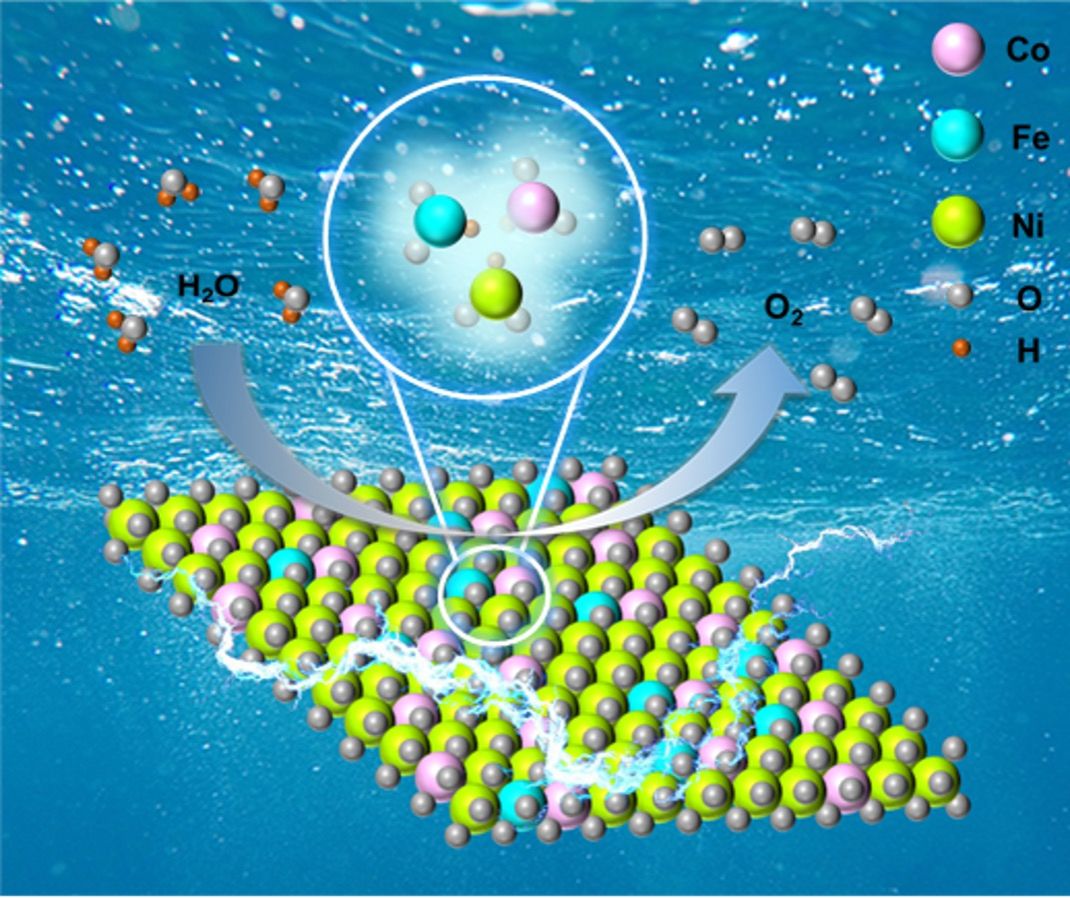
Lu Liu#, Lingxing Zan#, Yunchuan Tu*, Hongling Zhang, Dan Zhu, Zhe Li, Jiawen Zheng, Zhuangzhuang Zhang, Yu Sun, Qiang Weng, Jian Li, Qingbo Wei, Huicong Xia, Xin Bo*, Feng Fu*, Chemical Engineering Journal, 2024, 500, 156764. DOI:/10.1016/j.cej.2024.156764

The layered double hydroxides (LDH) derived from metal-organic framework (MOF) is one of the strategies for constructing efficient catalysts. It has been widely studied that adjusting and optimizing the coordination environment and valence electronic structure of active metal sites can achieve the synergistic effect and improve the intrinsic activity. We employed a facile solvent method to synthesize a well-defined hollow nanocube-structured CoFeNi-LDH with an optimized valence electronic structure of metal sites as an efficient electrocatalyst. The catalyst exhibites a strong synergistic catalytic effect and an excellent activity and stability. It achieved a lower overpotential of 294 mV at 100 mA cm-2, and high durability at the current density of 1 A cm-2, outperforming the commercial Ir-/Ru-based catalysts. The optimized the coordination environment and valence electronic structure of metal sites can definitely serve as active centers for triggering OER, thereby improving the intrinsic electrocatalytic performance. This study provides theoretical basis and material guarantee for the design of excellent OER catalyst and the development of electrolytic water.
Co-first Authors: Master’s candidate Liu Lu, Yan’an University; A/Prof. Zan Lingxing, Yan’an University
Correspondence Authors: A/Prof. Tu Yunchuan, Chongqing University, A/Prof. Bo Xin, Shaanxi Normal University, and Prof. Fu Feng, Yan’an University
Full Text Link:https://doi.org/10.1016/j.cej.2024.156764
 Latest Updates
Latest Updates






